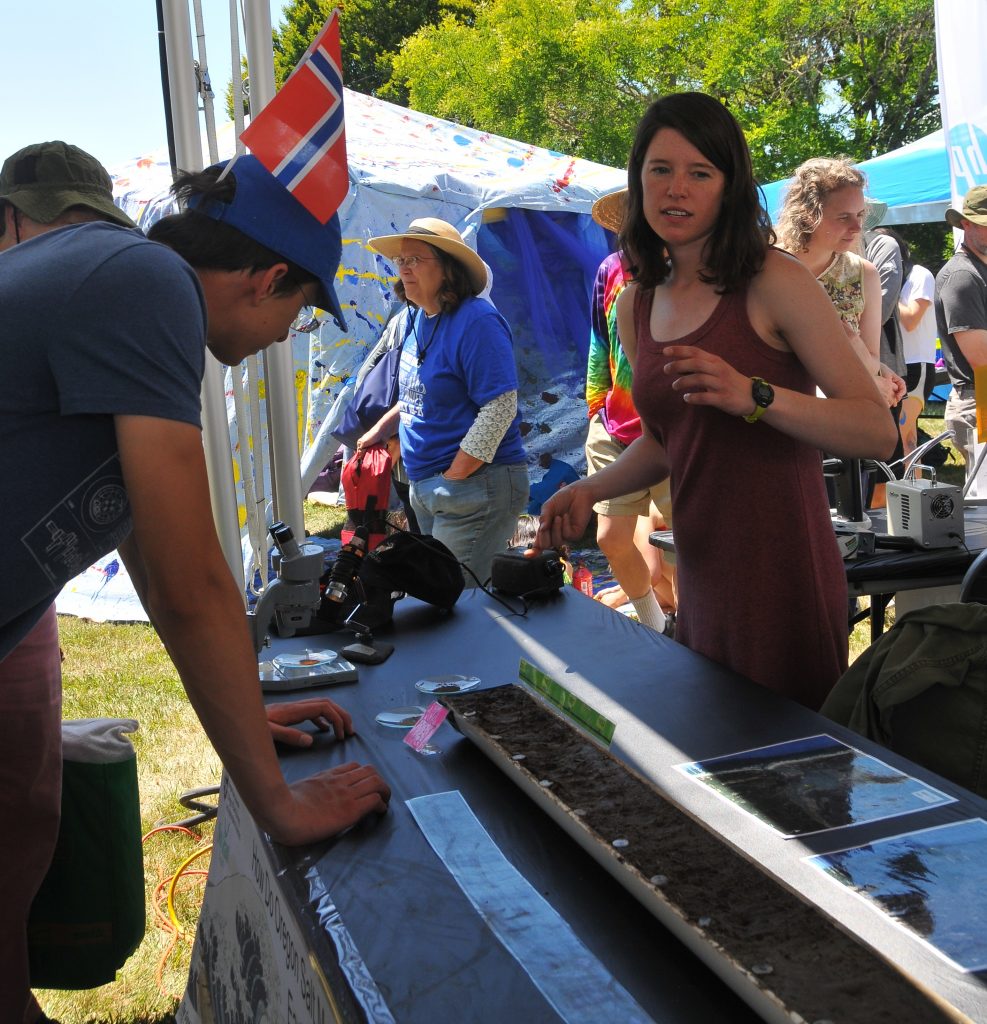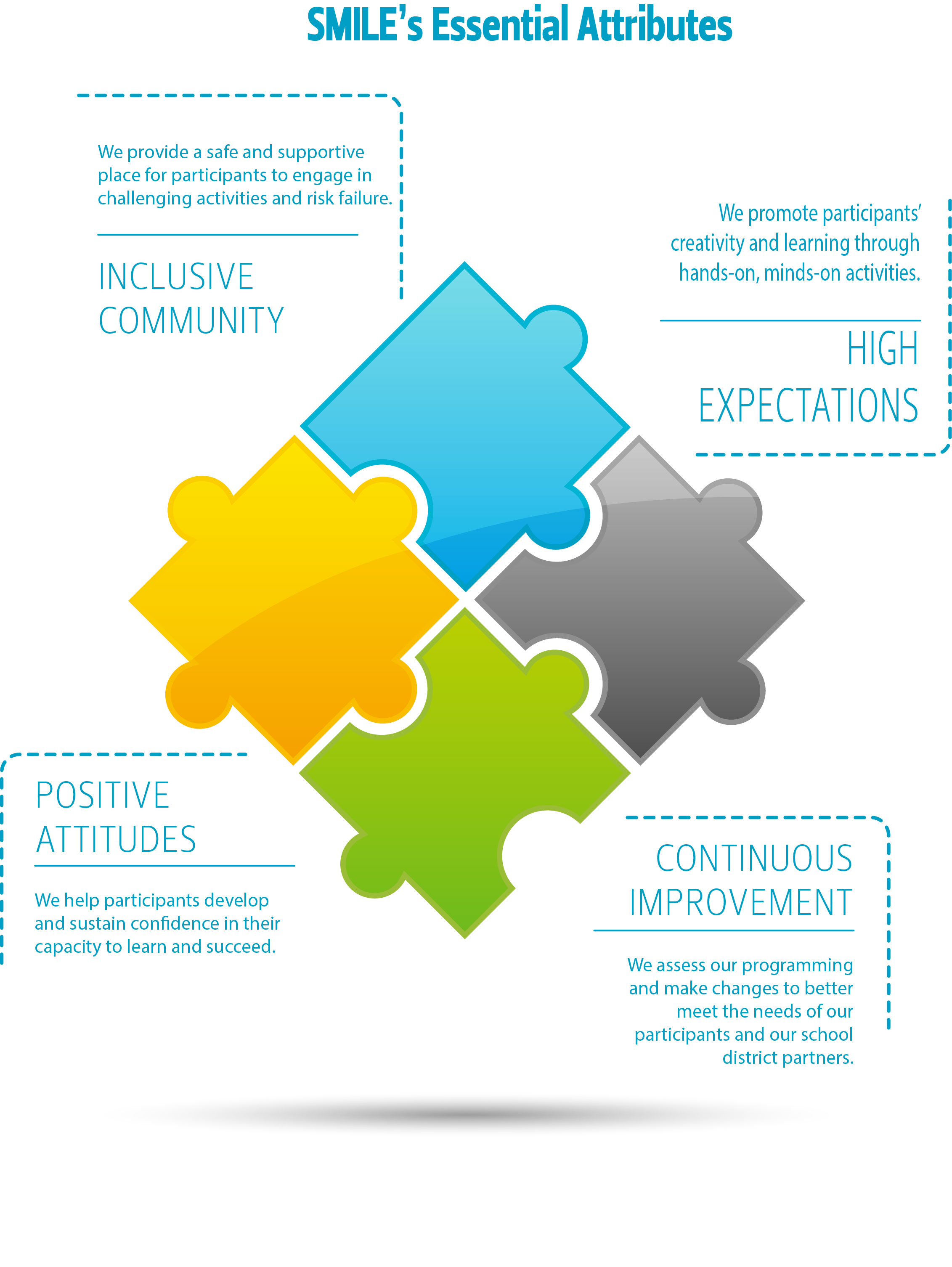My year as an Oregon Sea Grant Malouf Scholar has been truly a year of growth. Going into the fall of 2018, I had little to no outreach experience. During the last year, I learned about the process of developing, funding/supporting, delivering, evaluating, and reporting outreach activities. My experience as a graduate teaching assistant and completing the course requirements for the OSU GCCUT (Graduate Certificate in College and University Teaching) program proved useful in designing my activities. For instance, I utilized my knowledge of backward course design, which is a technique for designing course content by starting with outcomes in mind. When choosing content and creating my lesson plan for the SMILE events, I based all decisions on my desired learning objectives for students. In addition to learning how to apply my formal teaching skills to outreach education, I learned skills specific to engaging with the public. I did this by reading materials provided by OSG and SERC (the Science Education Resource Center at Carleton College), but I also sought advice and guidance from others along the way. I talked with graduate students in my program who have extensive experience developing K-12 educational products and outreach activities (Sophie Wensman, Dani Miller, and Ian Black), I spoke with outreach coordinators from my college (Abby Metzger and Nancy Steinberg) and from the Marine Geology Repository (Cara Fritz and Maziet Cheseby), and I asked for advice from a number of OSU outreach organizations (Precollege Programs and the Center for Research on Lifelong STEM learning). However, no matter how much I prepared for my activities through reading and reflecting, I needed the actual experiences of delivering my sediment core activities and displays in a number of formats – to coastal community members at Hatfield Marine Science Day, to the middle and high school students in the OSU SMILE program, and to Corvallis community members at da Vinci Days. These experiential learning opportunities taught me what works, what doesn’t, and how to quickly assess and adapt as the situation required. Just like being a research scientist and college and university teacher, being a member of the STEM community who effectively delivers outreach activities requires passion, practice, and a lot of self-assessment. I’m so thankful for Oregon Sea Grant’s support at the beginning of my outreach and engagement career!

So, what does the next year hold for me?
I will be a fellow in OSU’s Risk and Uncertainty Quantification in Marine Science National Science Foundation Research Traineeship (NRT) program. In association with this program, I will be working with a transdisciplinary group of graduate students from different STEM backgrounds to assess the health of Oregon’s coastal sediment routing system. Specifically, we will work to better understand the connectivity between freshwater and saltwater systems by combining knowledge of hydrologic landscape classification schemes with estuarine morphology. This topic is of extreme importance for assessing the vulnerability of these systems to climate and land-use change. My experience as a Malouf Scholar will certainly provide useful in this project as much of the project will focus on the human dimension – both how Oregon coastal communities are influencing these systems through land-use change and also how Oregon coastal communities will be impacted by degradation and loss of coastal ecosystem services. The NRT program incorporates a significant professional development aspect, and I hope to further develop my newfound community engagement skills through collaboration with Oregon marine resource stakeholders, development of outreach products, and delivery of public presentations of our results.
Additionally, over the next year, I will be starting a new project with funding from the Geological Society of America to determine the recovery times of Oregon’s salt marshes following the 1700 Cascadia Subduction Zone earthquake. I hope to disseminate the results of this project at the end of next summer. I also look forward to presenting my OSG-funded research at the CERF (Coastal & Estuarine Research Federation) 2019 conference in Mobil, AL this fall and continuing to attend OSG sponsored events, such as the State of the Coast conference and OSG Site Review.
Signing off for now!
Erin







